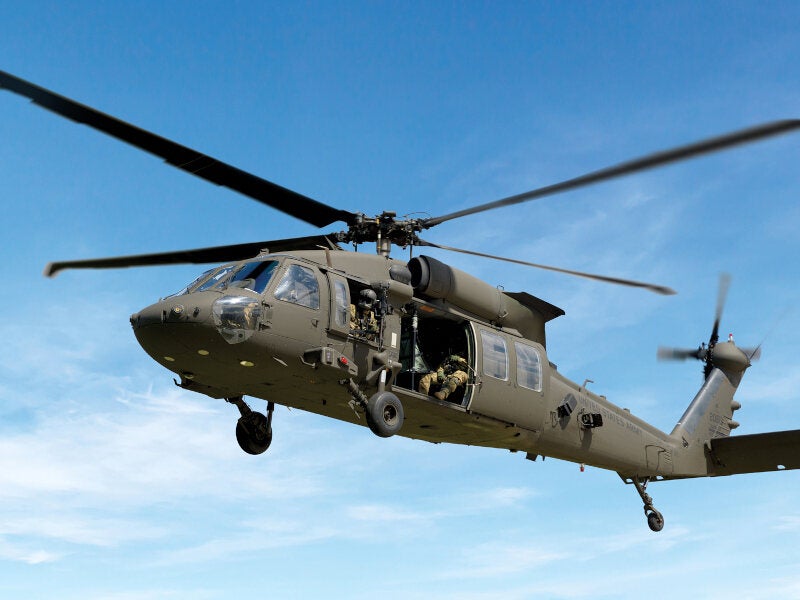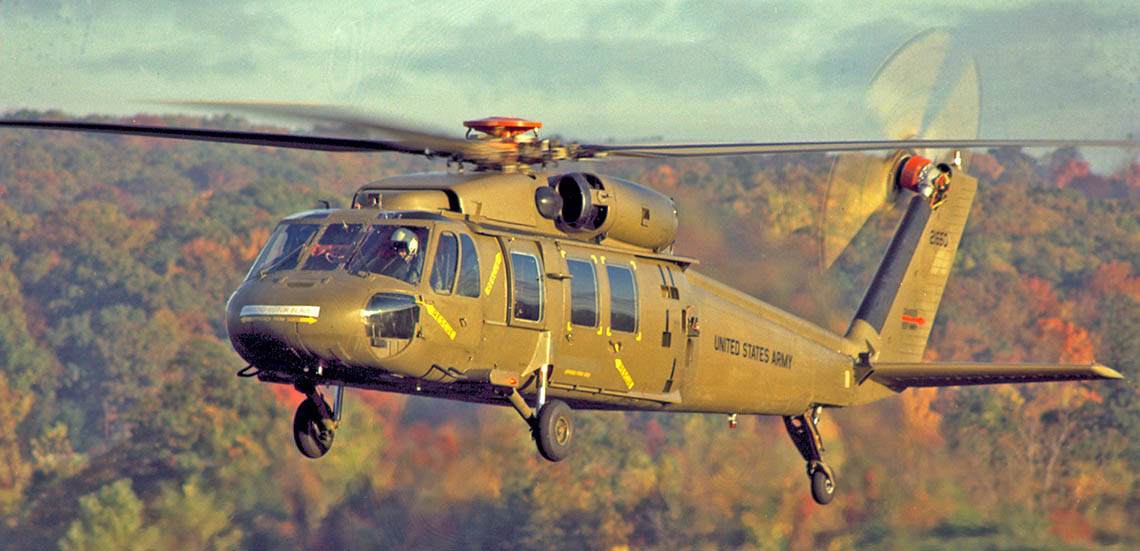Sikorsky S 70: Revolutionizing Tactical Procedures with Cutting-Edge Innovation
Sikorsky S 70: Revolutionizing Tactical Procedures with Cutting-Edge Innovation
Blog Article
High-Performance Multi-Role Rotorcraft Featuring Advanced Cabin Technologies and Integrated Sensing Unit Equipments
The realm of rotorcraft modern technology has actually seen significant innovations in recent times, particularly in the world of high-performance multi-role rotorcraft outfitted with advanced cockpit modern technologies and flawlessly incorporated sensing unit systems. In the following discussion, we will certainly discover the advancement of rotorcraft innovation, delve into the realm of advanced cockpit innovations, and take a look at the effects of integrated sensing unit systems on the operational adaptability and performance of modern-day rotorcraft.
Advancement of Rotorcraft Modern Technology
The development of rotorcraft innovation has been noted by substantial innovations in aerodynamics, materials, and propulsion systems, forming the abilities and performance of modern-day rotorcraft. Aerodynamic renovations have enhanced the performance and maneuverability of rotorcraft, enabling enhanced rate, dexterity, and security throughout trip (sikorsky s 70). Technologies in products, such as the use of composite products and progressed alloys, have actually brought about lighter yet more powerful rotorcraft frameworks, enhancing general performance and durability. In addition, developments in propulsion systems, consisting of extra effective engines and cutting-edge propulsion innovations, have enabled rotorcraft to attain greater elevations, faster speeds, and higher payloads.
These improvements have not only transformed the capacities of rotorcraft however have also expanded their applications throughout different industries, consisting of army, business, and emergency situation solutions. The constant evolution of rotorcraft technology remains to drive technology in the area, pressing the limits of what is possible and shaping the future of vertical trip.
Advanced Cabin Innovations
Building upon the fundamental innovations in aerodynamics, products, and propulsion systems, the realm of rotorcraft technology now shifts focus towards pioneering Advanced Cockpit Innovations. The combination of sophisticated innovations within the cabin atmosphere plays a critical duty in enhancing the operational capacities, safety and security, and performance of contemporary rotorcraft. sikorsky s 70. Advanced Cockpit Innovations incorporate a broad range of features created to provide pilots with improved situational understanding, streamlined data monitoring, and intuitive control user interfaces
One of the crucial improvements in cabin design is the application of glass cabins, which change traditional analog evaluates with high-resolution displays. These digital systems supply customizable formats, real-time data assimilation, and enhanced readability, allowing pilots to gain access to crucial info at a glance. Furthermore, advanced avionics systems, such as fly-by-wire controls and augmented fact displays, are revolutionizing exactly how pilots interact with the airplane, permitting accurate control and improved decision-making capacities.


Including advanced cabin advancements not only boosts pilot efficiency but likewise adds to total mission efficiency and security in intricate operational atmospheres. By leveraging advanced modern technologies within the cockpit, rotorcraft makers are setting new standards for operational excellence and mission success.
Integrated Sensing Unit Equipments
With the development of rotorcraft modern technology, the assimilation of sophisticated Integrated Sensing unit Systems has become extremely important in enhancing operational performance and security. These Integrated Sensing unit Systems include a wide variety of technologies that supply essential information for different functions such as navigation, monitoring, targeting, and environmental monitoring. By flawlessly integrating sensing units like radars, electronic cameras, lidar, and infrared systems right into rotorcraft, drivers can gain from improved situational awareness, enhanced objective capabilities, and lowered pilot work.
One key benefit of Integrated Sensor Equipments is their capacity to gather real-time data and provide workable understandings to pilots and objective operators. For instance, advanced radar systems can detect and track targets over long ranges, permitting very early danger detection and effective action planning. Additionally, integrating infrared and electro-optical video cameras makes it possible for rotorcraft to perform reconnaissance and security missions with precision and precision.
Basically, the integration of innovative sensor technologies into rotorcraft not only enhances functional performance however also contributes substantially to general mission success and staff safety and security. As rotorcraft proceed to advance, the role of Integrated Sensing unit Equipment will undoubtedly remain at the leading edge of advancement in the aerospace industry.
Functional Convenience and Effectiveness
Enhancing functional flexibility and effectiveness in rotorcraft is an all-natural progression from the combination of advanced Integrated Sensor Systems. By leveraging the data and understandings provided by these innovative sensing unit systems, rotorcraft can optimize their efficiency across numerous missions and settings.
Operational adaptability incorporates the capability this content of rotorcraft to adapt to various duties and circumstances successfully. With advanced cockpit innovations and incorporated sensing unit systems, rotorcraft can flawlessly shift in between tasks such as search and rescue, clinical evacuation, surveillance, and more. This flexibility enhances the rotorcraft's ability to satisfy diverse operational needs without requiring extensive reconfiguration.
Efficiency in rotorcraft procedures is essential for making best use of objective effectiveness and resource utilization. Integrated sensing unit systems play a pivotal role in improving operational performance by giving real-time information on climate condition, surface mapping, target tracking, and extra. This data allows pilots to make informed decisions swiftly, enhance flight courses, save fuel, and improve overall objective efficiency.
Effect On Modern Aeronautics Workflow

Additionally, the assimilation of sophisticated sensors promotes enhanced mission planning and implementation, enabling rotorcraft to execute a wide variety of jobs with improved accuracy. From search and rescue procedures to airborne firefighting and regulation enforcement objectives, the capacities of modern rotorcraft outfitted with advanced cabin technologies and incorporated sensor systems are unmatched.
In addition, the effect of these advancements extends past functional performance to cost-effectiveness and sustainability. By maximizing trip paths, gas consumption, and upkeep timetables, high-performance rotorcraft outfitted with innovative cockpit technologies and sensors add to decreasing operational costs and ecological influence, making them vital assets in modern-day aeronautics operations.
Final Thought
To conclude, sikorsky s 70 the high-performance multi-role rotorcraft with innovative cabin innovations and incorporated sensing unit systems represents a significant advancement in air travel modern technology. These developments improve functional flexibility and performance, ultimately impacting contemporary air travel operations in a favorable method. The assimilation of these advanced technologies permits enhanced capacities and efficiency in various goal situations, showcasing the proceeded improvement of rotorcraft modern technology in the aviation sector.
The world of rotorcraft innovation has seen notable improvements in current times, especially in the world of high-performance multi-role rotorcraft geared up with sophisticated cockpit innovations and flawlessly incorporated sensor systems. From enhanced mission adaptability to improved functional performance, the merging of sophisticated cabin technologies and incorporated sensor systems has ushered in a new era of opportunities for rotorcraft applications. In the following discussion, we will explore the advancement of rotorcraft innovation, delve into the world of advanced cabin developments, and take a look at the effects of incorporated sensing unit systems on the operational versatility and efficiency of modern rotorcraft.

Report this page